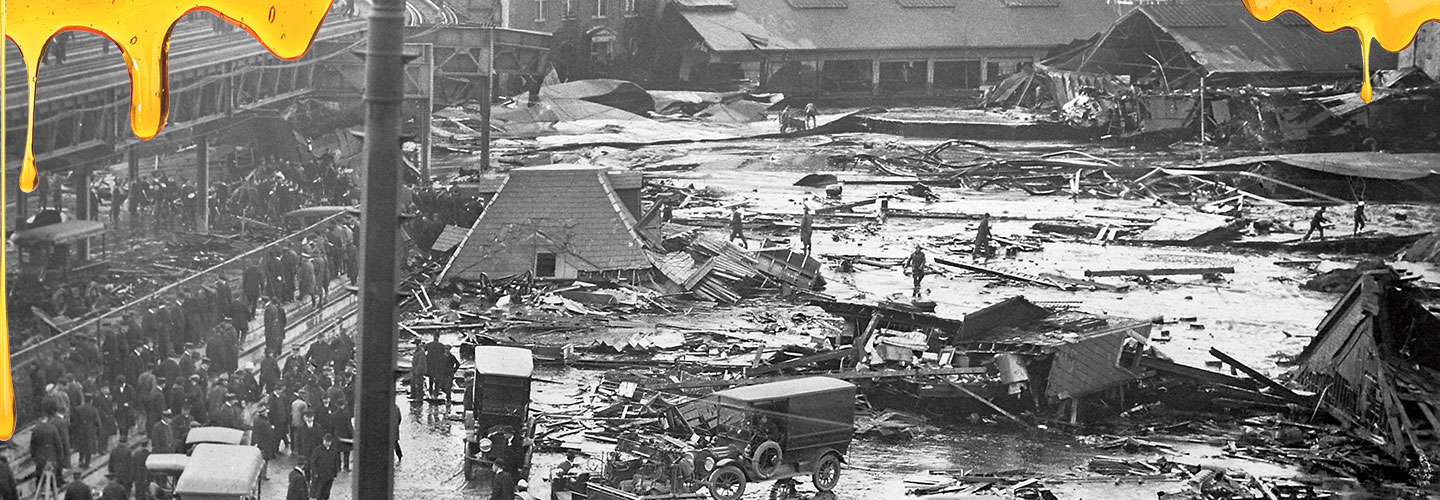The molasses had been kept in a giant steel tank. While molasses is often used in cookies and cakes, this molasses was being stored for a different purpose. The owners planned to turn it into a special type of alcohol. The alcohol was used to make explosives.
Around noon on that winter day in 1919, the tank burst with a mighty boom. The molasses gushed out.
Usually, molasses moves slowly. But the force of the tank collapse changed that. The thick syrup formed a 30-foot-high wave that raced down Commercial Street at 35 miles per hour. The molasses swept a truck into the nearby Boston Harbor. It damaged an elevated train track. It even flattened buildings and knocked a firehouse off its foundation.
Many people got stuck in the syrup. Sadly, 21 people died and 150 more were injured in the flood.
“Neither horses nor people could outrun it,” says Deborah Kops, author of a book about the tragedy.

